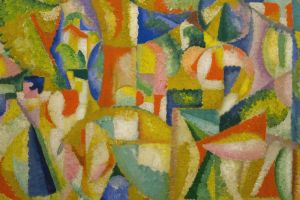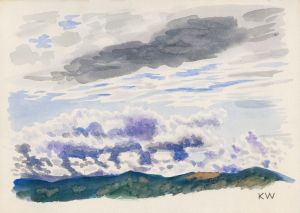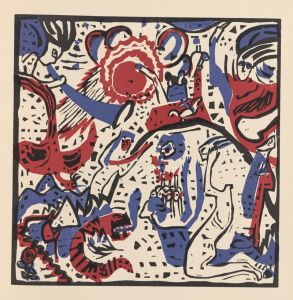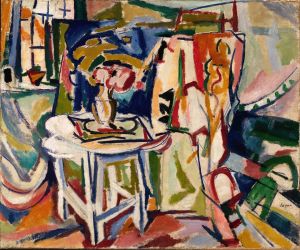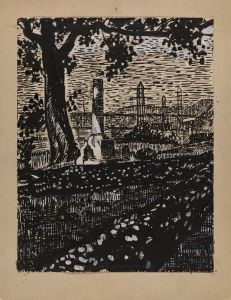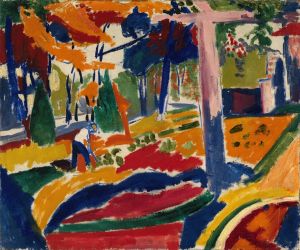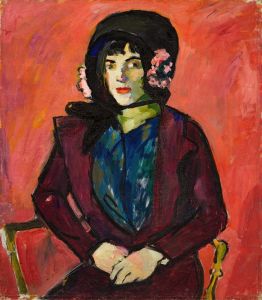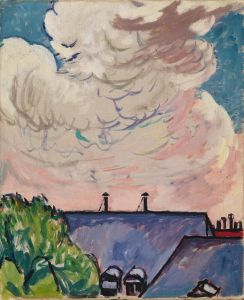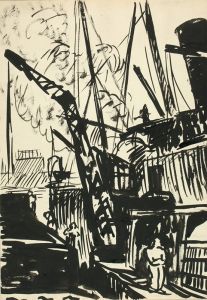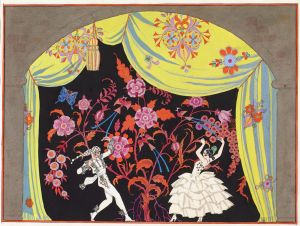
Winds
A hand-painted replica of Henry Lyman Saÿen’s masterpiece Winds, meticulously crafted by professional artists to capture the true essence of the original. Each piece is created with museum-quality canvas and rare mineral pigments, carefully painted by experienced artists with delicate brushstrokes and rich, layered colors to perfectly recreate the texture of the original artwork. Unlike machine-printed reproductions, this hand-painted version brings the painting to life, infused with the artist’s emotions and skill in every stroke. Whether for personal collection or home decoration, it instantly elevates the artistic atmosphere of any space.
Henry Lyman Saÿen (1875-1918) was an American artist and inventor, known for his contributions to both the art world and the field of radiology. One of his notable works is the painting titled "Winds," which exemplifies his unique approach to art, blending elements of modernism with a keen sense of color and form.
Saÿen was born in Philadelphia and initially trained as an engineer. He later studied art at the Pennsylvania Academy of the Fine Arts and furthered his education in Paris at the Académie Julian. His time in Paris exposed him to the avant-garde movements of the early 20th century, which significantly influenced his artistic style. Saÿen's work often reflects the vibrant energy and innovative spirit of the period, incorporating bold colors and dynamic compositions.
"Winds" is a striking example of Saÿen's mature style. The painting features a vivid and swirling composition that captures the essence of movement and energy. Saÿen's use of color is particularly noteworthy; he employs a palette of rich, contrasting hues that create a sense of depth and dynamism. The brushwork in "Winds" is expressive and fluid, contributing to the overall sense of motion that defines the piece.
The subject matter of "Winds" is abstract, allowing viewers to interpret the painting in various ways. Some may see it as a representation of natural forces, while others might perceive it as an exploration of emotional or psychological states. This ambiguity is a hallmark of Saÿen's work, inviting viewers to engage with the painting on a personal level.
In addition to his artistic achievements, Saÿen made significant contributions to the field of radiology. He invented the Saÿen tube, an early type of X-ray tube that improved the quality and safety of X-ray imaging. This invention was widely used in medical and scientific applications, demonstrating Saÿen's versatility and ingenuity.
Tragically, Henry Lyman Saÿen's life was cut short when he died in 1918 at the age of 43. Despite his relatively brief career, he left a lasting impact on both the art world and the field of radiology. His work, including "Winds," continues to be celebrated for its innovative approach and vibrant energy.
"Winds" remains an important piece within Saÿen's oeuvre, showcasing his ability to blend technical skill with artistic creativity. The painting is a testament to his talent and his contributions to the modernist movement. Today, Saÿen's work can be found in various collections, and "Winds" stands as a powerful example of his artistic vision.






